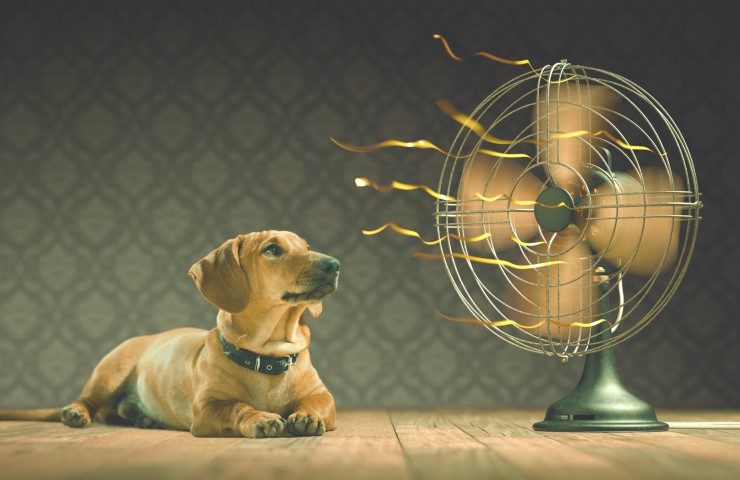
Aggression is one of the main reasons that dogs are euthanised or rehomed; at least 30% of all dogs in rescue centres are there because of the incidence of aggressive behaviour in one form or another. It is actually unusual to have a dog that is aggressing to have just one type of aggression; most dogs have more than one of the following types of behaviour.
It would be prudent, before embarking on a program of aggressive behaviour modification, to rule out any medical reasons for that behaviour, especially if there is a sudden change in the dog’s temperament. Their are some fifty-odd different medical reasons why a dog may be showing aggressive tendencies, these range from Pain to Thyroid Dysfunction, Epilepsy to Hypoglycaemia and Diabetes.
The following is a list of the more common aggressions and why they may be occurring. This is only a part of the total types. Because of the constraints of space it can only be a fleeting reference.
1. Fear / Nervous Aggression (Interdog)
Quite often, this behaviour has its roots directly to the pup’s mother. Breeders that breed from fearful and timid bitches will often make excuses as to why you cannot see the dam. If you do view a litter of puppies and the mother is fearful, then do not even think of buying the puppy. It will be almost a certainty that the pups will inherit some of the mother’s traits, through both genetics and socialisation, genetically the pups may inherit her timidity and through the time they are with her will observe her fear and follow suit.
Scientific research has shown that even the pups that are born to a solid and stable mother that are then put with a bitch that is fearful, they will pick up some of the unstable habits from the fearful dog. Other reasons for this fear type of problem is when the puppy or adult dog is attacked by another dog, especially whilst on the lead, with no means of escape and restricted from showing submissive body language to the attacker.
Lack of early socialisation can also have an affect on this type of behaviour, If the young pup, especially between the age of seven and sixteen weeks, is not carefully socialised with both adult and pups alike, then they do not learn to “meet and greet”. The complex body language dogs learn at this age is crucial to their later behaviour when approaching unknown dogs. If they are unable to either perform or understand the greeting rituals, then they are immediately viewed with suspicion by the approaching dog, and conflict may arise
How can you tell if it is fear?
With nervous and fear aggressive dogs, you will find that they will react aggressively to any dog, regardless of whether it is male or female. The behaviour is often worse if the dog is on the lead or is cornered, especially if close to the owner, who backs up the behaviour, (though unwittingly) by becoming nervous and agitated as the other dog approaches.
This manifests itself in a tightening up on the lead and shoulders. Nervous owners also kick out a cloud of adrenaline that the dog instantly detects, this causes it to look for what is causing the concern. It sees the dog approaching and reacts accordingly. This type of dog is also normally a barker, it will lunge and bark at the approaching dog but generally will not snap unless all its options have run out. ie flight or freeze and after all its threat posturing the other dog has still got too close.
This problem can often be diagnosed if someone who is confident around dogs (that the dog does not know well) takes it out on the lead. It will not get the same fearful vibes from the owner, therefore the reaction to another dogs approaching will be less intense. It is a good way of finding out if your dog suffers fear aggression, as the behaviour will either not be exhibited or will be less pronounced. The owner can then use a desensitisation program for both the dog and themselves.
2. Fear / Nervous Aggression (Inter-human)
Once again, this can be caused through lack of early socialisation, bad breeding and sometimes lack of handling at an early age, starting as young as two weeks old. Pups that are not handled gently and often by the breeder do not get a strong olfactory and tactile bond with humans. This is often the case with puppy farmed dogs and dogs born to large breeders. This handling at such an early age causes a mild stress response in the tiny pup, which benefits its ability to cope with many situations including people and dogs in later life
Nervous and fear aggressing is always defensive in nature, sometimes it is related to the sex of the person. If the breeder was female, and very few males visited or handled the puppies, then the timidity and fear may be worse with men. This particular problem like interdog hostility, will manifest itself mainly with individuals rather than crowds.
You will find that the dog will bark a lot but will be under a table or behind a settee. The tail will be down and although it may seem overtly aggressive, the dogs balance and weight will be on the back foot not over the front feet. This demonstrates that the dog wants you to go away and is not initially trying to bite or attack you. A gradual and careful introduction to the stimulus that is causing the fear with positive reinforcement for calm behaviour is the way to overcome this type of problem though the dog will rarely make a total and full recovery and will never be life and soul of the park and greeting parties.
3. Frustration Aggression
Research has shown that dogs who are not allowed to interact “normally” with people and dogs who were prone to displays of bad temper and behaviour that was overtly aggressive are dogs that are generally restrained or restricted from normal interactions (interactions with people, other dogs, and the outside world). The dog develops an intense desire to gain access to all of those things he desires.
This desire can escalate into escape and roaming behaviour, agitation, biting and unprovoked attacks. It is often observed in dogs that are left tied up in flats, left in gardens, or near a window where they can see the things they want to interact with, but cannot get to them therefore display unprovoked aggression. To some extent, the aggression shown to the postman is based on frustration. I have seen dogs attack their owner or a second dog in the home because it cannot get to the deliveryman.
As with most aggressive behaviours early socialisations and an understanding of how dogs learn and communicate are essential.
4. Sexual aggression.
This type of aggression is usually limited to male dogs. They will mount both people and other dogs. Mounting activity directed towards humans may reflect a lack of opportunity for the dog to play with other dogs, or an over-attachment to people in early life, mounting on other dogs especially if they initially try to put their heads over the other dog’s necks can be related to rank and control complex behaviour. Castration and behaviour modification can help with this problem. Allowing the dog to mate may often be recommended by the amateur dog expert, this normally makes the problem far worse.
5 Territorial Aggression
This may be towards other dogs, people or both. By definition, territorial aggression should be directed toward members of the same species ie other dogs. Domestic dogs, however, seem to regard humans in this regard as conspecific, and consequently may direct territorial aggression toward us When dogs display aggression to strangers only on the home property garden, house, or yard, yet do not respond aggressively to strangers on neutral territory, then territorial aggression is the likely diagnosis. There are two primary motivations for territorial behaviour, control complex behaviour ie dominance or fear/anxiety. It may be worse in a small space such as a car than in an open area. Some dogs like this can be fine in the home, but not so good in the garden.
The only answer to this problem is to work on the dominant/territorial problem in a way in which a dog understands its position through a behaviour modification programme using position reinforcement techniques. Remember not to praise for the cessation of bad behaviour rather praise for that bad behaviour not happening in the first place. In other words, say the dog jumps up on someone and you say “OFF” if the dogs get off then do not praise as you will be praising for the inappropriate behaviour, which was the jumping.
6. Control Complex / Dominant Aggression
The word dominant is a dirty word in dog behavioural circles at present however if we understand the word means position and is much more complex that just aggression, then to ignore this area of conflict would be remiss. The initial approach to other dogs is often cautionary and contains many status signals, like tail carriage held high and quickly moving from side to side, standing on tiptoe etc. If the other dog submits, then all is usually fine, if not the fighting can be extremely noisy and in some cases quite severe. In both the last two examples, dominant and territorial aggression, I usually find the dog will pull quite badly on the lead. These dogs can also display aggressive tendency towards members of the family this could lead to an attack if not controlled in their early stages. By working on a programme that will give the dog a purpose and a position in life, almost a job and teaching the dog to walk on a loose leash can sometimes overcome the problem. The type of program I would use is the NILIF program, which stands for “Nothing in Life is Free”, See my website under dominance
7. Chase or Predatory aggression
This can be directed at many things including dogs, cats, or anything that stimulates a chase response. Squirrels are a favourite, as their quick jerky movements seem to stimulate even the most placid of dogs. I see a lot of predatory chase aggression in for instance Border Collies, in particular stimulants like bikes, skateboards joggers and cars.
One of the key factors that distinguish predatory aggression from other forms of aggression is that movement often is the trigger . In the wild, this movement is in the form of running and escape attempts of a small animals. Predatory behaviour can be seen in dogs of any sex and age.
Dogs that show intense interest and become aroused or anxious by the movement or noise of children or other pets should be closely monitored at all times. Prognosis is not good for this type of aggression. Reward based obedience training can help, however this is only any use if the owner/trainer is able to constantly monitor the dog at all times.
It is easier to control the chase stimulus when it is directed at cars, joggers, or bikes. Two types of common treatment’s include counter-conditioning used to change the dogs’ perception of the falsely identified prey. Many also believe punishment works ie noise aversion when the behaviour is first stimulated. Throwing water from a car window or sounding a rape alarm or air horn at the exact time the dog takes off, throwing down a plastic bottle of stones from a passing bike or car can sometimes alter this behaviour.
However. To be effective, punishment must be seen as aversive and the timing of the punishment must be exact so that the dog associates the punishment with the behaviour. Electric shock collars have also been suggested but are not part of treatment programs I would ever recommend.
As mentioned aggression often has its origins in bad breeding, lack of socialisation, high prey drive, and poor basic training can also exacerbate the situation. However, as stated before it can be related to medical conditions and before embarking on a course of behavioural therapy have your dog checked over to see if there are any underlying medical conditions.
Learned aggression can normally be cured however, hereditary aggression cannot, it can only be controlled and hopefully contained. Castration sometimes helps, and should be considered in an overall aggression reduction program. With all aggression cases, you should consider a behaviourist or a dog trainer experienced in these problems, before the problems becomes life threatening either to the dog or the person they are aggressing against.
Stan Rawlinson (Doglistener)
Dog Behaviourist and Obedience Trainer, who has owned and worked dogs for over 25 years, starting with gundogs then moving to the behavioural and obedience side of training companion dogs. He now has a successful practice covering Greater London, Surrey, and Middlesex.
Stan is recommended by numerous Vets, Rescue Centres, and Charities. He writes articles and comments on behavioural issues and techniques for dog magazines including Our Dogs, Dogs Monthly, K9 Magazine, Shooting Times and Pet Owner Magazine.
© Stan Rawlinson
Telephone: 0208 979 2019
Mobile Number: 07976 153161
E-mail:[email protected]
 Five Universal Personality Traits Of The Siberian Husky
Five Universal Pe
Five Universal Personality Traits Of The Siberian Husky
Five Universal Pe
 Five Effective Ways To Keep Your Dog Cool
Five Effective Wa
Five Effective Ways To Keep Your Dog Cool
Five Effective Wa
 Dog-Friendly Holiday Accommodation: Questions You Need To Request Before Booking an area
Dog-Friendly Holiday Accommodation: Questions You Need To Request Before Booking an area
 Professional Help For Pet Sitting And Grooming
Professional Help For Pet Sitting And Grooming
Professional Help For Pet Sitting And Grooming
Professional Help For Pet Sitting And Grooming
 How To Determine If Your Horse Is In Pain
How To Determine
How To Determine If Your Horse Is In Pain
How To Determine
Copyright © 2005-2016 Pet Information All Rights Reserved
Contact us: www162date@outlook.com